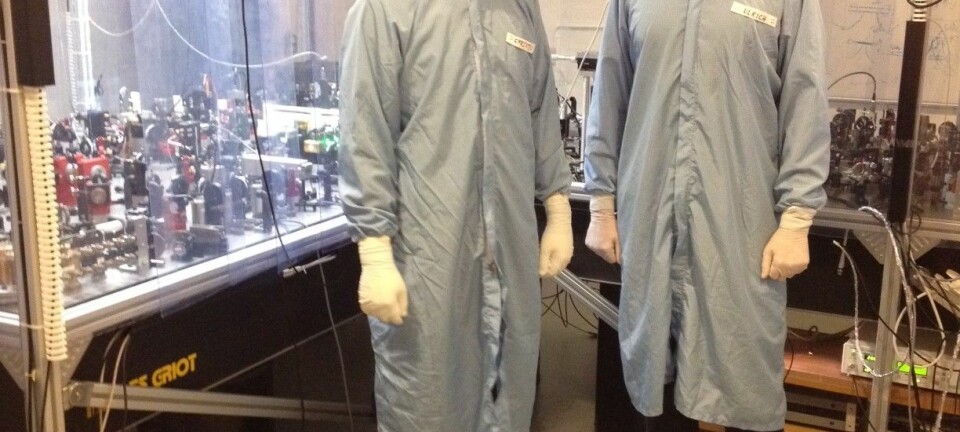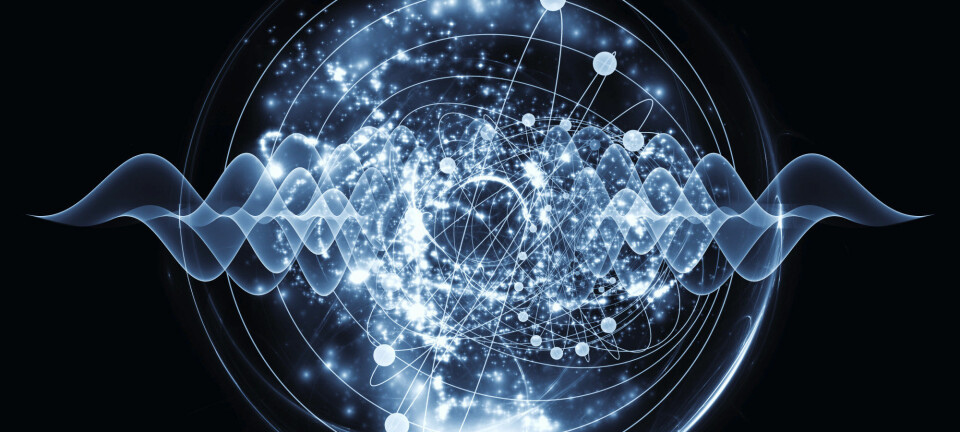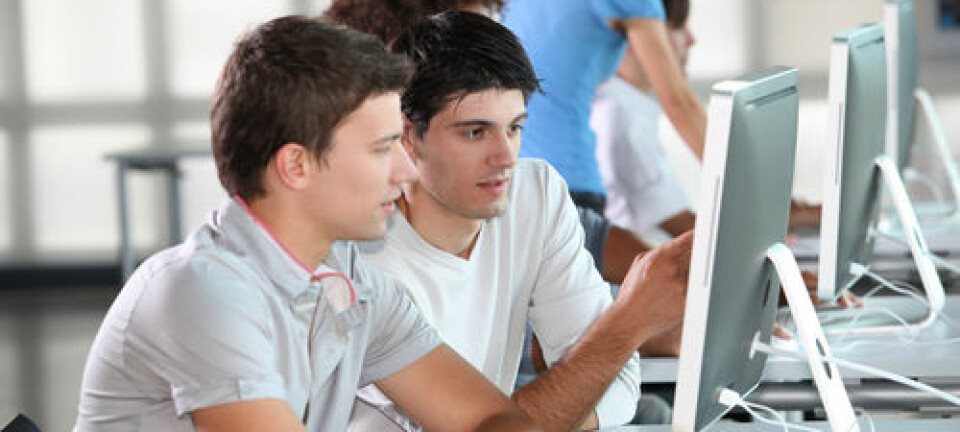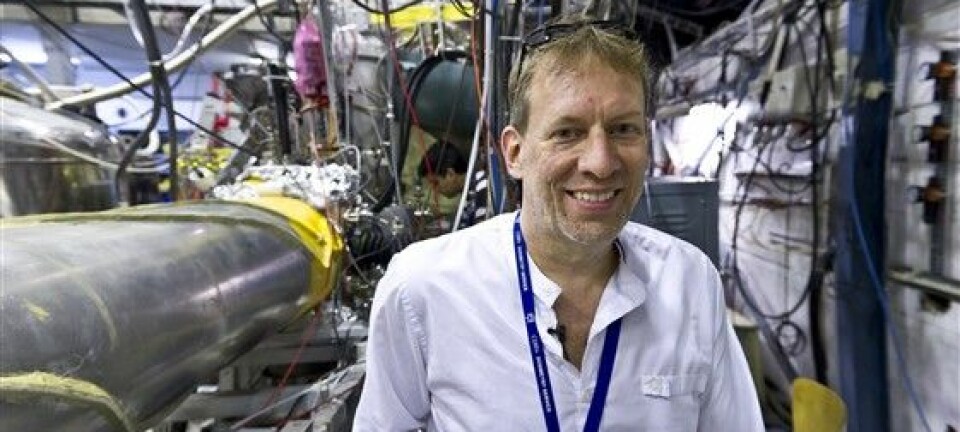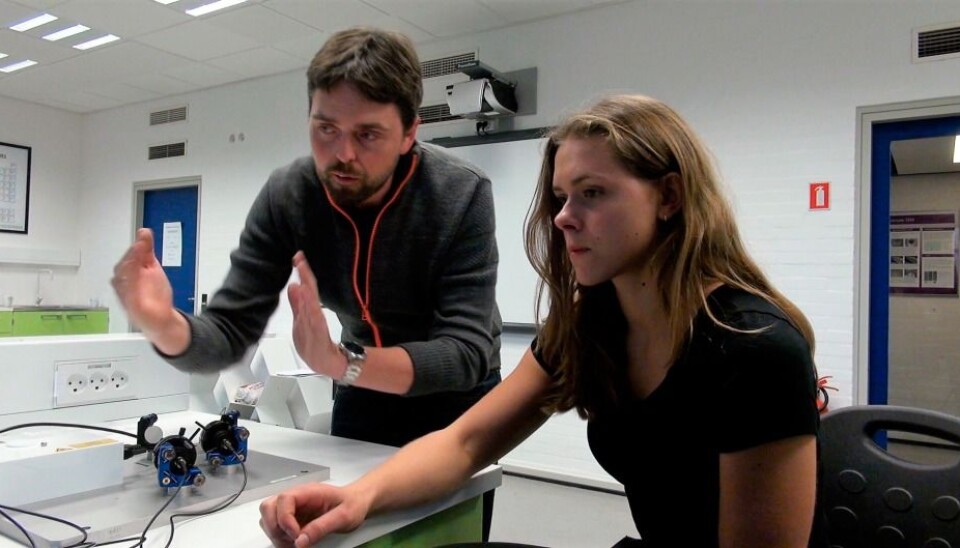
Physicists want to recruit more young quantum physicists
A Danish physicist has constructed a quantum physics laboratory especially for high school students to attract more young people to the field.
The quantum race has begun and the pot must be kept boiling in Danish quantum physics research to maintain the present day success of the field, says post doc Ulrich Busk Hoff, a quantum physicist from DTU Physics.
Hoff has recently launched at project called QuantumLab, where he invites high school students from around Denmark into the laboratory in the hope of “piquing their curiosity for nature’s fascinating, microscopic phenomena,” and perhaps even recruiting the best young brains to the field—the future quantum physicists.
“We need to future-proof Denmark’s position in quantum physics research. We need the right people if we’re to remain at a good level, and so we should let young people know about the opportunities when they are in high school,” says Hoff.
Read More: Hunting for the “quantum limit”
Students replicate historic experiments
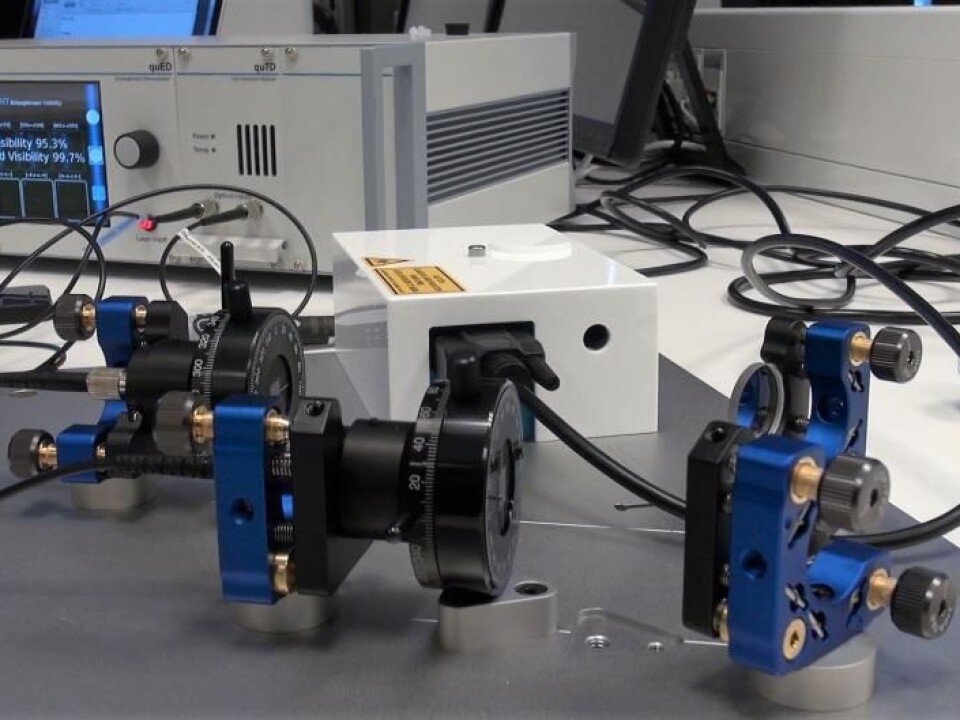
Inquisitive high school students in Denmark now have the opportunity to try their hand at making photons “dance” in a designated teaching laboratory at DTU, under the supervision of a professional quantum physicist.
So far, students from four high schools in Denmark have taken part.
The laboratory resembles a typical high school lab--with more advanced equipment. Here, students replicate some of the key historic experiments in quantum physics.
Today, three high school students from two different schools in Denmark are “optimizing the fibre couplings” in each of their individual experiments.

The original experiment led to a paradigm shift in physics in 1982 and the acceptance of quantum physics among physicists of the day.
It is called the “Bell test experiment,” or the “Aspects trial,” named after the physicists John S. Bell and Alain Aspect, who developed the theory behind it and later confirmed it.
But today the famous experiment is in new hands.
Read More: Quantum Computing and why we need to replace the Internet
A single photon becomes two
The students are not intimidated by the historical experiment and continue to work away.
Each set-up consists of a laser box and a row of mirrors, coupled to a computer.
One of the students, Anna-Sophie Thein from Espergærde High School in North Zealand, has already mastered the theory behind the experiment.
“The laser box converts one photon into two, which are emitted in parallel to the system of mirrors, where their electric fields oscillates either vertically or horizontally,” she says and points to each of the experimental components of the experiment.
The electric field oscillations are called polarisations, and the student’s task is to measure how much the two polarisations of the photons interact, which indicates how entangled they are, says Hoff.
“Quantum mechanics predicts that a pair of photons can be produced in a state where they are so entangled that they can no longer be considered as separate particles. The correlations between them are so strong that they cannot be explained by classical physics, and we are thus forced to accept the quantum mechanical description,” he says.
Read More: Scientists need your help to build a quantum computer
“It should be a bit tricky”
But it is, of course, not so easy. In fact, this rarely works, says Hoff.
The instruments tease the students, and one mirror has a spot of grease on it, which prevents the photons from passing through it.
Hoff tries to clean the mirror with a piece of lint-free tissue, but it does not help much.
The measurements begin to jump up and down on the computer display by the side of the experiment.
“Sometimes you have to really work hard to make the experiment work,” says Hoff, while he holds the mirror up and squints at it.
“But this is a paradigm shifting experiment, so it should be a little tricky,” he says.
Read More: The nanomedicines of the future will build on quantum chemistry
“Anyone can learn this, if they want to”
Despite the technical problems Gustav Staxen Lind, from Stenhus High School in West Zealand, Denmark, is surprised that the quantum experiments were not harder.
“Quantum physics is not as difficult as you think. If you want to, you can understand it. The hardest part is getting the experiment to work,” says Lind.
This is exactly the outcome that Hoff had hoped for.
“It’s up to us physicists down the road to communicate quantum physics in a way that the fascinating quirks of nature that drives our own curiosity, really shines through. We can save the hard-core maths for later and instead illustrate what physics is all about and what it can be used for,” he says.
------------------
Read the full story in Danish on Videnskab.dk
Translated by: Catherine Jex
